Abstract
Background: Herbal therapies are used as alternatives to modern treatment regimens and may help alleviate side effects associated with hypoglycaemic agents in the market. In addition, majority of the South African populace still relies on medicinal plant preparations for treatment of various diseases.
Aim: This study was aimed at screening 13 traditional medicinal plants (HR1-HR13) used for treatment of diabetes, bought from traditional healers in Gauteng, South Africa.
Setting: The traditional medicinal preparations were evaluated for their anti-diabetic mechanisms of action on C2C12 skeletal muscle cells and presence of active phytochemical constituents.
Methods: Phytochemical screening was performed using both qualitative (thin layer chromatography [TLC]) and quantitative assays. Furthermore, we determined the glucose uptake, glucose transporter 4 translocation, protein kinase B phosphorylation and expression of insulin receptor substrate 1.
Results: There was presence of phytochemical constituents, mostly phenolic contents. The study revealed upregulation of glucose uptake by the cells, and furthermore, HR2 and HR13 improved GLUT 4 translocation at 1.25 mg/mL as compared to the negative control. Similarly, Insulin receptor substrate 1 (IRS-1) expression and Akt phosphorylation significantly (p < 0.05) increased in comparison to the untreated controls cells.
Conclusion: The results are suggestive of the possible involvement of PI3K/Akt Phosphatidylinositol 3-kinase pathway in lowering glucose by the medicinal plant preparations.
Contribution: The results support use of the medicinal plant preparations by traditional healers for treatment or management of diabetes mellitus.
Keywords: medicinal preparations; phytochemicals; glucose uptake; GLUT 4; diabetes; herbalists.
Introduction
Diabetes is a long-term metabolic disease, which has grown to epidemic measures in South Africa and the world at large (Stokes et al. 2017). Diabetes has a severe effect on people living with it, as well as their families, especially on their finances, creating a huge public health burden to the economically challenged countries and their populace (WHO 2016).
Glucose is metabolised by cells as a source of energy by oxidative processes and for glycosylation of protein as a post-translational modification of some proteins (Navarro, Abelilla & Stein 2019). Among the major target organs for insulin action are the skeletal muscle and adipose tissue, which play important roles in insulin-induced glucose uptake. After insulin is secreted by pancreatic beta cells, it crosses the interstitial spaces and binds to the insulin-specific receptors localised on the surface of the skeletal muscle cells and adipocytes (Kubota & Kubota 2011). This results in activation of a cascade of intracellular events that drive glucose absorption by these cells. These intracellular events include the phosphorylation of the two insulin receptor substrates — Insulin receptor substrate 1 (IRS 1) and IRS 2 (Minokoshi, Kahn & Kahn 2003). Phosphorylation of IRS leads to class I phosphatidylinositol 3-kinase (PI3K) activation, which triggers the activation of protein kinase B/ Akt, a downstream protein kinase (Msomi et al. 2019).
Glucose is transported in and out of the cells by facilitated diffusion driven by a facilitative family of glucose transporters (GLUTs) (Brewer et al. 2014). The primary glucose transporter is glucose transporter type 4 (GLUT-4), found in the skeletal muscle and adipose tissues (Schreiber et al. 2017; Tanasova & Fedie 2017). Upon activation of Akt and subsequent phosphorylation of Phosphoinositide 3-kinase (PI3K), GLUT-4 is stimulated and translocated towards the plasma membrane, where it makes it easier for glucose to enter the cells, thus reducing the amount of blood glucose (Takazawa et al. 2008; Tokarz, Macdonald & Klip 2018). Phosphorylation of different intracellular proteins results in changes in the activity of other proteins, like protein kinases, which stimulate translocation of GLUT-4 (De Meyts 2016). Diabetes mellitus (DM), however, alters the normal metabolic processes explained above.
Conventional treatments such as sulfonylureas and thiazolidinediones control the amount of glucose in the blood, but they also present with adverse side effects, such as weight gain, heart failure, dizziness and risk of bone fracture (Owens, Monnier & Barnett 2017; Wing & Jivan 2016). These side effects, the financial burden and poor access to medical facilities encourage the use of herbal medicines as alternative therapies (Chikezie et al. 2015). Medicinal plants present with an excellent reservoir of compounds that may have important pharmacological effects, including anti-diabetic activity (Mongalo & Mafoko 2013; Balogun, Tshabalala & Ashafa 2016). Some studies have confirmed the anti-diabetic activity of a large number of plant species, with activity attributed to their many chemical constituents, which include but not limited to polysaccharides, steroids, terpenoids, flavonoids, saponins, amino acids and their derivatives (Balogun et al. 2016; Chikezie et al. 2015)
It is imperative to monitor the safety, dose, effectiveness and chosen method of action of traditional medicinal plants in addition to identifying the active ingredients. Medicinal plants have the ability to either inhibit or activate one of the steps that regulate important biochemical pathways involved in glucose homeostasis (Ashraf, Khan & Ashraf 2011; Nazarian-Samani et al. 2018). According to Patel et al. (2012), the use of mixed traditional preparations is preferred based on the belief that when several plants are mixed together they enhance effectiveness, synergistic actions and reduce toxicity. Therefore, plant-based or derived traditional medicinal preparations were screened for their efficacy in the biochemical regulation of glucose homeostasis. The objective was to screen for their potential hypoglycaemic and insulin-modulating effects using an in vitro model based on cell culture.
Research methods and design
Research methodology
This research was an experimental one and involved analysis and characterisation of herbal mixtures containing various unknown medicinal plant species. The effects of the extracts were tested on the cultured skeletal muscle (C2C12) cells in vitro.
Setting
Thirteen traditional medicinal plants concoctions bottles labelled HR1, HR2, HR3, HR4, HR5, HR6, HR7, HR8, HR9, HR10, HR11, HR12 and HR13, used for treatment of DM by traditional healers, were bought from herbalists (inyangas in Zulu) in the Tshwane region, Gauteng, South Africa.
Study population and sampling strategy
A Whatman filter paper (No. 1) was used to filter the 13 concoctions and the filtrates were frozen overnight at -20 °C and freeze-dried for 5 days to lyophilised material. In order to prepare the lyophilised materials for further processing, they were reconstituted in phosphate-buffered saline (PBS, pH 7.2) to a final working concentration of 10 mg/mL solution and refrigerated.
Data collection
Data were collected through evaluation of the composition of medicinal plant concoctions using thin layer chromatography and measurement of the glucose uptake, expression of IRS-1 and phosphorylation of Akt by C2C12 skeletal muscle cells treated with herbal preparations.
Phytochemical analysis
Qualitative phytochemical screening procedures were performed to assess secondary metabolites contained in the medicinal plant preparations, using thin layer chromatography (TLC). The detection methods were based on the method described by Jork et al. (1994).
Thin layer chromatography: The samples were prepared by dissolving 0.01 g of the freeze-dried concoctions in 1 mL of acetone to prepare a 10 mg/mL concentration, using three components: ethyl acetate, methanol and water (EMW) in the proportions of 40:5.4:5. About 5 µL of each of the samples was loaded on the plate developed in a mobile phase and allowed to dry. For visualisation of compounds, the dried TLC plate (Merck, SA) was stained in a vanillin solution (1 g of vanillin mixed with 100 mL of 95% ethanol). Different colours because of the presence of different compounds were observed (Matysik et al. 2016).
Further screening was performed for phenols, glycosides and alkaloids using the TLC plate methods as described by Jork et al. (1994). Samples were prepared on TLC plates as above.
Phenols: To determine the presence of phenolics, the TLC plates were immersed in diphenylamine reagent (10 g of diphenylamine in 100 mL of ethanol, 100 mL of hydrochloric acid [HCL] and 80 mL of glacial acetic acid) and placed in an oven for 10 min at 110 °C. The reaction of diphenylamine with phenols produced a blue-black colour.
Glycosides: For glycosides detection, the ferric chloride method was used. The TLC plate were sprayed with 1% of ferric chloride in methanol/water (1:1) and heated for 10 min at 110 °C. The reaction of ferric chloride and glycosides produced a blue colour.
Alkaloids: For alkaloids detection, Dragendorff’s spraying reagent was used. The TLC plates were sprayed with Dragendorff’s spraying reagent and heated in an oven for 10 min. The emergence of a brown colour was indicative of the presence of alkaloids.
Cell culture
C2C12 skeletal muscle were acquired from the American Type Culture Collection (ATCC) and kept under liquid nitrogen for preservation. The cells were cultivated in Dulbecco’s Modified Eagle Medium (DMEM), which was supplemented with 10% foetal bovine serum (FBS) and 5 mL penicillin-streptomycin. The medium also contained 4.5 g/L of glucose, L-glutamine and sodium pyruvate. The cells were kept in a 5% CO2 incubator at 37 °C for 3 days. The cultured medium was replaced after 2–3 days, ensuring the cells remained in exponential growth (log) phase. Cells were detached from the flask using trypsin, sub-cultured to confluency, for 3–4 days in a 96-well plate at a density of 1 × 105 cells/mL. After fully differentiating into myotubules, the cells were treated (approximately 5–7 days’ incubation without changing growth medium) for various assays.
Glucose uptake assay
Cells were treated as per cell culture protocol above. After removing the growth medium, media containing traditional medicine preparations was used at different concentrations (0.625 mg/mL – 5 mg/mL). The cells were re-incubated, then glucose in the medium was measured at 1, 3 and 6 h at 37 °C. Following the manufacturer’s instructions, the glucose oxidase-based assay kit was used to measure the amount of glucose in the medium (Cormay, Kat Medical South Africa). Insulin (0.0087 mM – 0.0696 mM) constituted the positive control, while cells that had not been treated were the negative control. By comparing the glucose content in media with and without herbal samples, the amount of glucose absorbed was ascertained. Fifty µL of the medium was aliquoted and mixed with 100 µL of glucose reagent at 37 °C for a further 15 min of incubation. This was followed by determination of glucose in the medium at 540 nm (Multiskan Go Scan, Thermo Scientific). The data were expressed as the amount of glucose (mmol/L) in the medium, in the presence and absence of the traditional medicinal preparations according to the equation below.

Glucose transporter type 4 translocation
Glucose transporter type 4 levels at the cell surface of C2C12 myotubules were measured by fluorescence. Both treated and untreated cells were incubated for 3 h. Afterward, the growth medium was removed, the cells were washed with Tris-buffered saline (TBS), and they were fixed for 15 min with 4% formaldehyde. After washing, the cells three times with TBS for 5 min, the cells were blocked with 1% bovine serum albumin (BSA) and then rinsed three times with TBS containing 0.1% Tween® 20 detergent (TBST) for a duration of 5 min each. Thereafter, fluorescein isothiocyanate-conjugated rabbit anti-mouse GLUT-4 antibody (FITC) (1:10000 dilution) was added to the cells and incubated overnight at 4 °C. After that, the cells were washed with TBST solution and examined using a fluorimeter (Promega-Glomax Multi Detection System, Roche S.A.) to ascertain the amount of FITC on the cell surface. The results were expressed as fluorescence intensity according to the equation below:
Total insulin receptor substrate 1 expression
In accordance with the manufacturer’s recommendations, the expression of IRS-1 was measured using an ELISA-based kit (Elabscience, China). Six well-plates containing confluent cultures of C2C12 muscle cells were treated for 3 h with 1 mg/mL of selected medicinal preparations and insulin solution (0.139 nM). After washing the cells three times with PBS, protease and phosphate inhibitors were added to the cell lysis buffer to cause lysis of the cells. After being suspended and shaken for 30 min at 4 °C, the lysates were centrifuged for 10 min at 4 °C at 13 000 rpm. The supernatant was transferred into clean test tube and was utilised immediately. For the first two columns of the plate, 100 µL of standard working solution was added. After adding 100 µL of samples to each well, the plate was sealed and incubated at 37 °C for 90 min. Following the removal of the samples from each well, 100 µL of the Biotinylated detection Ab working solution was added to each well. Once more, the plate was sealed with the plate sealer, gently mixed and incubated at 37 °C for 1 h. Each well’s working solution was decanted then washed with 350 µL of wash buffer. Each well’s wash buffer was discarded, and then the plate was inverted and blotted against fresh absorbent paper.
Following the addition of 100 µL of horse radish peroxidase (HRP) conjugate working solution to each well, the plate was sealed with a plate sealer and incubated for a further 30 min at 37 °C. Thereafter, about 350 µL of wash buffer was added to each well, and the solution was discarded. This last step was carried out five times. After adding 90 µL of substrate reagent to each well and covering them with a fresh plate sealer, the plates were incubated for an additional 15 min at 37 °C. The optical density of each well was then measured at 450 nm using a Multiskan-Go Scan (Thermo Scientific) after 50 µL of stop solution was added to each well. The concentration of IRS in medicinal preparations was calculated using the concentration values from the standard and absorbance values.
Total Akt phosphorylation
An enzyme-linked immunosorbent assay (ELISA) kit was used to assess phosphorylated Akt (Akt-pS473) in accordance with the manufacturer’s (Elabscience, China) recommendations. Six well-plates containing confluent cultures of C2C12 muscle cells were treated for 3 h with insulin solution (0.139 nM) and 1 mg/mL of selected medicinal preparations. After washing the cells three times with PBS, protease and phosphate inhibitors were added to the cell lysis buffer to cause lysis of the cells. After being suspended and shaken for 30 min at 4 °C, the lysates were centrifuged for 10 min at 4 °C at 13 000 rpm. The supernatant was transferred into clean test tube and was utilised immediately. After adding 100 µL of samples to each well the plate was sealed and incubated overnight at 4 °C with shaking.
Thereafter, the medicinal plants samples were discarded, and the wells were washed four times using 1 × wash solution. The plate was turned over and was blotted dry with a fresh paper towel. To each well, a 100 µL of prepared 1:1000 dilution rabbit anti-phospho-Akt (Ser473) antibody was added. The wells were then shaken and incubated at room temperature for 1 h. After discarding the diluted antibody, the wells were washed four times using wash buffer. Following the addition of 100 mL of HRP conjugate working solution to each well, the plate was sealed with a plate sealer and incubated for 1 h at room temperature with shaking. This was followed by washing four times with the wash buffer. Each well was filled with 100 µL of TMB one-step substrate reagent, which was shaken in the dark and incubated at room temperature for 30 min.
The optical density of each well was then measured at 450 nm using a Multiskan-Go Scan (Thermo Scientific) after 50 µL of stop solution was added to each well. The amount of Akt present was presented as calculated values from the standard concentration and absorbance values.
Statistical analysis
The expression of the results was articulated as the average of three separate tests in comparison to the negative control. Data were recorded and analysed using Microsoft Excel®. One-way Analysis of Variance (ANOVA) was used to examine the data’ statistical significance. The significance level for the results was (*) p < 0.05.
Ethical considerations
The study does not ethical clearance as no human samples were used. Only cryopreserved ATCC cells were used.
Results
Thin layer chromatography
The separated compounds were visualised with vanillin solution, resulting in the observation of different colours (Figure 1). Medicinal preparations HR4, HR7, HR8, HR9, HR11 and HR12 had similar blue spots with the same relative migration. The observed colour was indicative of presence of terpenoids, as previously reported by Karthika and Paulsamy (2015). A similar profile was observed with HR6 and HR9, which had distinctive red spots suggestive of presence of phenols (Jork et al. 1994; Lewis & Smith 1969; Wettasinghe, Shahidi & Amarowicz 2002). Medicinal preparations HR1, HR2 and HR10 had faint greyish spots, suggestive of present of sugars (Jork et al. 1994; Lewis & Smith 1969). Based on the observations, some medicinal preparations had similar phytochemical compounds, suggesting that these preparations contained at least one common plant component.
 |
FIGURE 1: Chromatogram for detection of phytochemical compounds on thin layer chromatography sprayed with vanillin-sulphuric acid solution on medicinal plants preparations. |
|
Phytochemicals
For detection of phenols, the chromatogram was sprayed with diphenylamine solution, and a blue-black colour was indicative of the presence of phenols. Many of the selected medicinal preparations, with exception of HR4, HR7, HR10 and HR13 revealed the presence of phenolic components (Table 1). The chromatogram was sprayed with ferric chloride solution, and a blue colour was indicative of the presence of glycosides. Only HR1, HR4, HR7 and HR11 showed the presence of glycosides (Table 1). Medicinal preparations were sprayed with Dragendorff’s reagent for detection of alkaloids. The emergence of a brown band was indicative of alkaloids. Medicinal preparations HR3, HR6, HR9 and HR11 had a fair amount of alkaloids (Table 1), while no bands were observed for HR1, HR4, HR5, HR7, HR8, HR10, HR12 and HR13.
| TABLE 1: Qualitative phytochemical analysis for detection of phenols, sprayed with diphenylamine solution, glycosides, sprayed with ferric chloride solution and alkaloids, sprayed with Dragendorff’s reagent on medicinal plants preparations. |
Glucose uptake
After 1 h treatment of cells with the herbal preparations, the medicinal plant preparations resulted in a decrease in the amount of glucose in the media (Figure 2). HR1 demonstrated a significant (p < 0.05) glucose uptake activity at lower concentrations (0.625 and 1.25 mg/mL) as compared to the negative control and insulin. A similar activity was observed with HR7, HR10 and HR11 in a dose dependent manner at a higher concentration (5 mg/mL).
 |
FIGURE 2: Glucose measurement in C2C12 muscle cells after 1 h treatment with different concentration (mg/mL) of medicinal plant preparations (HR1, HR2, HR3, HR4, HR5, HR6, HR7, HR8, HR9, HR10, HR11, HR12 and HR13). |
|
After a 3 h incubation, the plant samples continued in decreasing the amount of glucose in the medium (Figure 3). HR1 significantly (p < 0.05) increased glucose uptake activity as compared to other traditional medicinal preparations, insulin and negative control. The activity was observed at the highest concentrations (2.5 and 5 mg/mL), respectively. Medicinal plant preparations HR3, HR8, HR11 and HR13 similarly resulted in a decrease in the amount of glucose in the media at 2.5 mg/mL.
 |
FIGURE 3: Glucose measurement in C2C12 muscle cells after 3 h treatment with different concentration (mg/ml) of medicinal plant preparations (HR1, HR2, HR3, HR4, HR5, HR6, HR7, HR8, HR9, HR10, HR11, HR12 and HR13). |
|
After 6 h incubation, both insulin and traditional medicinal preparations maintained the stimulation of glucose uptake in a concentration dependent manner (Figure 4). Significant glucose uptake activity was observed at 6 h compared to 1 and 3 h. The traditional medicinal preparations HR1, HR11 and HR12 significantly (p < 0.05) enhanced glucose uptake by the cells at 5 mg/mL compared to insulin and negative control. HR2 exhibited increased uptake activity at 1.5 mg/mL, while HR13 was recorded at 0.625 mg/mL.
 |
FIGURE 4: Glucose measurement in C2C12 muscle cells after 6 h treatment with different concentrations (mg/ml) of medicinal plant preparations (HR1, HR2, HR3, HR4, HR5, HR6, HR7, HR8, HR9, HR10, HR11, HR12 and HR13). |
|
Glucose transporter type 4 translocation
For this assay, traditional medicinal preparations (HR1, HR2, HR12 and HR13) were selected based on their influence on glucose uptake by C2C12 cells above. Fluorescence was measured at the cell surface of the treated C2C12 cells. Insulin and all selected traditional medicinal preparations improved GLUT 4 translocation as compared to the untreated control (Figure 5). Significant (p < 0.05) GLUT 4 translocation was observed with traditional medicinal preparations HR2 and HR13 at 1.25 mg/mL as compared to negative control.
 |
FIGURE 5: Glucose transporter type 4 translocation after 3--hr treatment of C2C12 cells with different concentrations (mg/ml) of medicinal plant preparations (HR1, HR2, HR12 and HR13) at 1 mg/mL. |
|
Total insulin receptor substrate 1 expression
Following the observation that some of the traditional medicinal preparations improved glucose uptake as well as GLUT 4 translocation, it became necessary to investigate the link of these events to IRS-1 expression.
The study revealed that some of the traditional medicinal preparations led to the expression of IRS-1 (Figure 6). Traditional medicinal preparations HR13 significantly (p < 0.05) improved IRS-1 expression better than untreated controls. Similarly, there was an upregulated expression of IRS-1 by HR12 compared to the negative control.
 |
FIGURE 6: Insulin receptor substrate 1 expressions on C2C12 cells after treatment with 1 mg/ml of medicinal plant preparations (HR1, HR2, HR11, HR12 and HR13) and Insulin (0.139 nM). |
|
Total Akt phosphorylation
The activation of Akt, through phosphorylation on Ser-473, precedes GLUT4 translocation and glucose uptake. It was plausible to presume that the preparations that led to a high glucose uptake as well as increased GLUT-4 translocation would also stimulate an increase in the proportion of phosphorylated Akt.
The results revealed that all traditional medicinal preparations with exception of HR2 enhanced the phosphorylation of Akt (pS473). Significant (p < 0.05) Akt phosphorylated was observed with traditional medicinal preparation HR11 (Figure 7).
 |
FIGURE 7: Akt phosphorylation (S473) in C2C12 cells after treatment with 1 mg/mL of medicinal plant preparations (HR1, HR2, HR11, HR12 and HR13) and Insulin at 0.139 nM. |
|
Discussion
Insulin resistance in individuals with type 2 diabetes reduces the ability of peripheral tissue cells, such as adipocytes and skeletal muscle cells, to absorb and use glucose, which leads to inadequate systemic glucose homeostasis (Piero, Nzaro & Njaji 2014; Ruan & Dong 2016). This is the context in which we examined the impact of traditional herbal preparations on skeletal muscle (C1C12) cell glucose absorption and utilisation. It is against this background that we investigated the effects on glucose uptake and utilisation in skeletal muscle (C1C12) cells. It is important that as traditional medicinal preparations are used as alternative treatment for type 2 diabetes, their mechanism(s) of action be understood. The present study was conducted to determine the mechanism(s) involved in lowering glucose levels by traditional medicinal preparations.
Traditional medicinal preparations were screened for selected phytochemicals (phenols, glycosides and alkaloids). Phenols were detected in most medicinal preparations, and phenolic acids are known for their ability to increase glucose uptake and lipid profiles in chronic disease such as diabetes and its complications (Vinayagam, Jayachandran & Xu 2015). Phenolic compounds have garnered significant attention as potential treatments against free radical-mediated illnesses, namely DM, because of their powerful free radical scavenger properties (Gaikwad Mohan & Rani 2014). Glycosides were also noted in some of the medicinal preparations. Previous studies have shown that glycosides have anti-hyperglycaemic properties (Okonta & Aguwa 2007; Rawat et al. 2011; Zaidan et al. 2019). Absence of glycosides in majority of medicinal plants preparation is not surprising, as it was reported by Mosy (2017) that glycosides occur in small quantities in the seeds, leaves, stem, roots and bark of plants.
Similarly, the medicinal preparations had limited amounts of alkaloids. Presence of alkaloids in some of these medicinal preparations may be linked to their hypoglycaemic properties. Alkaloids are known to be active principles in some anti-diabetic medicinal plants (Aba & Asuzu 2018). In addition, a study by Sharma et al. (2013) reported an improvement of GLUT-4 and peroxisome proliferator activated receptor gamma activities by alkaloid-rich extracts of Capparis decidua.
There was relative increase of glucose utilisation by cells treated with medicinal preparations, which corresponded with the effect of insulin, suggesting that these preparations may possess insulin mimetic properties (Patel et al. 2012). Glucose utilisation significantly increased after 6 h incubation, which elicited an effect greater than that of insulin. This data indicated that the preparations have long-acting capability, displaying their activity after prolonged exposure (in a time-dependent manner) (Al-Zuaidy et al. 2018; Vlavcheski et al. 2017). A study by Zygmunt et al. (2010) and Seabi et al. (2016) similarly reported increased glucose uptake by muscle cells on Naringenin, Cassia abbreviata and Helinus integrifolius, respectively.
The proper absorption of glucose by cells, including adipocytes and skeletal muscle cells, depends on the translocation of GLUT-4 (Du et al. 2017). The effect of the selected traditional medicinal preparations on GLUT-4 translocation revealed an increase in glucose absorption by cells compared to negative control. This may be because of translocation of GLUT-4 to the cell surface. Seabi et al. (2016) reported the link between glucose uptake by C2C12 cells and GLUT-4 translocation by a combination of Cassia abbreviata and Helinus integrifolius.
Akt and IRS-1 are two of the proteins that control the recruitment of glucose transporters to the plasma membrane, which is necessary for glucose absorption (Mabhida, Johnson & Ndlovu Mmosa 2019). This investigation revealed that the traditional medicinal preparations increased Akt phosphorylation and IRS-1 expression. HR11 was the best in stimulation of Akt, while HR12 and HR13 increased the expression of IRS-1 as compared to other traditional medicinal preparations. HR12 and HR13 came highly recommended by the traditional healer, thus explaining activity observed and their antidiabetic properties. These medicinal plant preparations lowered the amount of glucose via GLUT 4 translocation, expression of IRS-1 and phosphorylation of AKT, suggesting the possible involvement of the PI3/Akt pathway. In muscle and fat cells, Akt activation enhances GLUT 4’s translocation to the plasma membrane, which increases the cells’ absorption of glucose (Gao et al. 2014). The observed results explain the regulation of glucose uptake, by medicinal plant preparations, as there was stimulation in the major processes (Akt, IRS and GLUT 4 translocation) involved in glucose uptake. The observed phenolic compounds might also be a contributing factor to the observed activity. The defect in GLUT4 expression and translocation results in major metabolic irregularities leading to diabetes (Gao et al. 2014; Msomi et al. 2019).
The HR2 demonstrated no effect on phosphorylation of Akt and the expression of IRS-1, thus indicating that glucose uptake by cells was not mediated through the PI3K/Akt pathways. However, despite the apparent evasion of the PI3K/Akt pathway, HR2 was able to stimulate glucose absorption and GLUT4 translocation through a different pathway, possibly the adenosine monophosphate-activated protein kinase (AMPK) pathway. Furthermore, HR1 enhanced glucose uptake and GLUT 4 translocation, with stimulation of Akt independently of IRS, and thus, the AMPK pathway cannot be ruled out. One of the primary regulators of cellular energy balance, AMPK is a pharmacological target for medications that treat diabetes, including metformin (Gruzman, Babai & Sasson 2009; Mazibuko et al. 2013). Zygmunt et al. (2010) revealed that muscle cells treated with Naringenin enhanced absorption of glucose; AMPK phosphorylation was greatly elevated while Akt phosphorylation was not affected in a significant way. Mazibuko et al. (2013) reported that AMPK increased glucose uptake via GLUT 4 (non-insulin dependent pathway) in cells treated with Rooibos. Similarly, Msomi et al. (2019) reported that Warburgia salutaris activated Akt dependently on PI3K, but independently on IRS-1 with the expression of AMPK.
The findings suggest the effectiveness of the medicinal plant preparations as possible traditional remedies for treatment of hyperglycaemia. Their use and effectiveness in traditional medicine may be attributed to their ability to stimulate glucose uptake.
Conclusion
Glucose uptake is stimulated by movement of GLUT 4 from within the cell to the membrane. The data led to the conclusion that HR12 and HR13 may be regarded as insulin mimickers as they increased glucose uptake via GLUT 4 translocation that appears to involve the PI3/Akt pathway. As a result, our findings corroborate the assertion and strongly imply that the chosen traditional medicinal preparations may have antidiabetic properties. These findings may improve our understanding of the hypoglycaemic effects of traditional medicinal preparations and encourage the use of traditional medicinal preparations as an alternative treatment for type 2 diabetes.
Strength and limitations
The limitations of this study were that the contents of the medicinal plant preparations were not known, as a result, active compounds could not be attributed to a specific plant. In addition, the traditional healers refused to divulge the information on the plant species used for each of the traditional medicinal preparation used. It would be beneficial to test each plant individually to observe whether same results will be observed and identify the active components to substantiate the current results.
Recommendations
Further tests like Gas Chromatography Mass, Spectrometry (GCMS) and Liquid Chromatography Mass Spectrometry (LCMS) need to be conducted to identify the individual active components of each plant extract to substantiate the current results.
Acknowledgements
The author, P.K.M. would like to acknowledge Tshwane University of Technology for the study opportunity, Prof. Shai for supervision and my co-authors for their valuable input.
Competing interests
The authors have declared that no competing interest exists.
Authors’ contributions
P.K.M. carried out the experiment and wrote the article with support from L.J.S., M.A.C. and M.P.M. S.L. and M.A.C. supervised the project and conceived the original idea, while M.P.M. analysed the data and reviewed the manuscript.
Funding information
The authors would like to acknowledge National Research Foundation (NRF) for funding. L.J.S. is a recipient of NRF funding under the Competitive Support for Rated and Unrated Researchers.
Data availability
The data that support the findings of this study are available on request from the corresponding author, C.M.A. The data is not publicly available because of the information that could compromise the study.
Disclaimer
The views expressed in this article are of the authors and not those of Tshwane University of Technology or the NRF and the publisher.
References
Aba, P.E. & Asuzu, I.U., 2018, ‘Mechanisms of actions of some bioactive anti-diabetic principles from phytochemicals of medicinal plants: A review’, Indian Journal of Natural Products and Resources 9(2), 85–96.
Al-Zuaidy, M.H., Ismail, A., Mohamed, S.A.F.A., Razis, A.F.A., Mumtaz, M.W. & Hamid, A.A., 2018, ‘Antioxidant effect, glucose uptake activity in cell lines and cytotoxic potential of Melicope lunu-ankenda leaf extract’, Journal of Herbal Medicine 14, 55–60. https://doi.org/10.1016/j.hermed.2018.06.002
Ashraf, R., Khan, R.A. & Ashraf, I., 2011, ‘Garlic supplementation with standard antidiabetic agent provides better diabetic control in type 2 diabetes patients’, Pakistan Journal of Pharmaceutical Sciences 24, 565–570.
Balogun, F.O., Tshabalala, N.T. & Ashafa, A.O.T., 2016, ‘Antidiabetic medicinal plants used by the Basotho tribe of Eastern Free State: A review’, Journal of Diabetes Research 2016, 1–13. https://doi.org/10.1155/2016/4602820
Brewer, P.D., Habtemichael, E.N., Romenskaia, I., Mastick, C.C. & Coster, A.C.F., 2014, ‘Insulin- regulated Glut 4 translocation, membrane protein trafficking six distinctive steps’, Journal of Biological Chemistry 289(26), 17280–17298. https://doi.org/10.1074/jbc.M114.555714
Chikezie, P.C, Okey, A., Ojiako, O.A. & Nwufo, K.C., 2015, ‘Anti-diabetic medicinal plants: The Nigerian diabetes research experience’, Diabetes Metabolism 6, 546. https://doi.org/10.4172/2155-6156.1000546
De Meyts, P., 2016, ‘The insulin receptor and its signal transduction network’, in K.R. Feingold, B. Anawalt & M.R. Blackman (eds.), Endotext, MDText.com, Inc., South Dartmouth, MA, viewed n.d., from https://www.ncbi.nlm.nih.gov/books/NBK378978/.
Du, K., Murakami, S., Sun, Y., Kilpatrick, C.L. & Luscher, B., 2017, ‚DHHC7 Palmitoylates glucose transporter 4 (Glut 4) and regulates glut 4 membrane translocation’, Journal of Biological Chemistry 292(7), 2979–2991. https://doi.org/10.1074/jbc.M116.747139
Gao, J., Li, J., An, Y., Liu, X., Qian, Q., Wu, Y. et al., 2014, ‚Increasing effect of Tangzhiqing formula on IRS-1-dependent PI3K/AKT signalling muscle’, BMC Complementary and Alternative Medicines 14, 198. https://doi.org/10.1186/1472-6882-14-198
Gruzman, A., Babai, G. & Sasson, S., 2009, ‘Adenosine Monophosphate-Activated Protein Kinase (AMPK) as a new target for antidiabetic drugs: A review on metabolic, pharmacological and chemical considerations’, The Review of Diabetic Studies: RDS 6(1), 13–36. https://doi.org/10.1900/RDS.2009.6.13
Jork, H., Funk, W., Fishcer, W. & Wimmer, H., 1994, ‘TLC reagents and detection methods – Physical and chemical detection methods: Activation reactions, reagent sequences, reagents, II, Vol 1b, Wiley, New York, NY.
Karthika, K. & Paulsamy, S., 2015, ‘TLC and HPTLC fingerprints of various secondary metabolites in the traditional medicinal climber, Solena amplexicaulis’, Indian Journal of Pharmaceutical Sciences 77(1), 111–116. https://doi.org/10.4103/0250-474X.151591
Kubota, T. & Kubota, N., 2011, ‘Impaired insulin signalling in endothelial cells reduces insulin-induced glucose uptake by skeletal muscles’, Cell Metabolism 13(3), 294–307. https://doi.org/10.1016/j.cmet.2011.01.018
Lewis, B.A. & Smith, F., 1969, ‘Sugars and derivatives’, in E. Stahl (ed.), Thin-layer chromatography, pp. 807–837, Springer, Berlin.
Mabhida, S.E., Johnson, R. & Ndlovu Mmosa, R.A., 2019, ‚Molecular basis of the hyperglycemic activity of RA-3 in hyperlipidemic and streptozotocin- induced type 2 diabetes in rats’, Diabetology & Metabolic Syndrome 11, 27. https://doi.org/10.1186/s13098-019-0424-z
Matysik, E., Wofniak, A., Paduch, R., Rejdak, R., Polak, B. & Donica, H., 2016, ‘The new TLC method for separation and determination of multicomponent mixtures of plant extracts’, Journal of Analytical Methods in Chemistry 2016, 1813581. https://doi.org/10.1155/2016/1813581
Mazibuko, S.E., Muller, C.J., Joubert, E., De Beer, D., Johnson, R., Opoku, A.R. et al., 2013, ‘Amelioration of palmitate-induced insulin resistance in C2C12 muscle cells by rooibos (Aspalathus linearis)’, Phytomedicine 20(10), 813–819. https://doi.org/10.1016/j.phymed.2013.03.018
Mongalo, N.I. & Mafoko, B.J., 2013, ‘Cassia abbreviata Oliv. A review of its ethnomedicinal uses, toxicology, phytochemistry, possible propagation techniques and Pharmacology’, African Journal of Pharmacy and Pharmacology 7(45), 2901–2906. https://doi.org/10.5897/AJPP12.1017
Mosy, N., 2017, Aromatic and medicinal plants back to nature, InTech, Rijeka.
Minokoshi, Y., Kahn, C.R. & Kahn, B., 2003, ‘Tissue-specific ablation of the GLUT4 glucose transporter or the insulin receptor challenges assumptions about insulin action and glucose homeostasis’, The Journal of Biological Chemistry 278(36), 33609–33612. https://doi.org/10.1074/jbc.R300019200
Msomi, N.Z., Shode, F.O., Pooe, J.O., Mazibuko-Mbeje, S. & Simelane, M.B.C., 2019, ‘Iso- Mukaadial acetate from Warburgia Salutaris enhances glucose uptake in the L6 rat myoblast cell line’, Biomolecules 9(10), 520. https://doi.org/10.3390/biom9100520
Navarro, D.M.D.L., Abelilla, J.J. & Stein, H.H., 2019, ‘Structures and characteristics of carbohydrates in diets fed to pigs: A review’, Journal of Animal Science and Biotechnology 10, 39. https://doi.org/10.1186/s40104-019-0345-6
Nazarian-Samani, Z., Sewll, R.D.E., Lorigooini, Z. & Rafieian-Kopel Mahmoud, 2018, ‘Medicinal plants with multiple effects on diabetes and its complications: A systematic review’, Current Diabetes Reports 18, 71. https://doi.org/10.1007/s11892-018-1042-0
Okonta, J.M. & Aguwa, C.N., 2007, ‘Evaluation of hypoglycemic activity of glycosides and alkaloids extracts of Picralima nitida staf (Apocynaceae) seed’, International Journal of Pharmacology 3(6), 505–509. https://doi.org/10.3923/ijp.2007.505.509
Owens, D.R., Monnier, L. & Barnett, A.H., 2017, ‘Future challenges and therapeutic opportunities in type 2 diabetes: Changing the paradigm of current therapy’, Diabetes, Obesity and Metabolism 19(10), 1339–1352. https://doi.org/10.1111/dom.12977
Patel, P., Harde, P., Pillai, J., Darji, N. & Patel, B., 2012, ‘Antidiabetic herbal drugs a review’, Pharmacophore Journal 3(1), 18–29.
Piero, M.N., Nzaro, G.M. & Njaji, J.M., 2014, ‘Diabetes mellitus – A devastating metabolic disorder’, Asian Journal of Biomedical and Pharmaceutical Sciences 04(40), 1–7. https://doi.org/10.15272/ajbps.v4i40.645
Rawat, P., Kumar, M., Rahuja, N., Lal Srivastava, D.S., Srivastava, A.K. & Maurya, R., 2011, ‘Synthesis and antihyperglycemic activity of phenolic C- glycosides’, Bioorganic & Medicinal Letters 21, 228–233. https://doi.org/10.1016/j.bmcl.2010.11.031
Ruan, H. & Dong, L.Q., 2016, ‘Adiponectin signalling and function in insulin target tissues’, Journal of Molecular Cell Biology 8(2), 101–109.
Schreiber, R., Diwoky, C., Schoiswohl, G., Feiler, U., Wongsiriroj, N., Abdellatif, M. et al., 2017, ‘Cold-induced thermogenesis depends on ATGL-mediated lipolysis in cardiac muscle, but not brown adipose tissue’, Cell Metabolism 26(5), 753–763.
Seabi, I.M., Motaung, S.C.K.M., Ssemakalu, C.C., Mokgotho, M.P., Mogale, A.M. & Shai, L.J., 2016, ‘Effects of Cassia abbreviata Oliv. and Helinus integrifolius (Lam.) Kuntze on glucose uptake, Glut-4 expression and translocation in muscle (C2C12 Mouse Myoblasts) cells’, International Journal of Pharmacognosy and Phytochemical Research 8(6), 1003–1009.
Sharma, R., Privadarshi, S.S., Kumar, V., Skarmar, K. & Arora, R., 2013, ‘Evidence based herbal drug standardization approach in coping with challenges of holistic management of diabetes: a dreadful lifestyle disorder of 21st century’, Journal of Diabetes & Metabolic Disorders 12(1), 35.
Stokes, A., Berry, K.M., Mchiza, Z., Parker, W., Labadarios, D. & Chola, L., 2017, ‘Prevalence and unmet need for diabetes care across the care continuum in a national sample of South Africa adults: Evidence from the SANHANES-1, 2011–2012’, PloS One 12(1), 0184264. https://doi.org/10.1371/journal.pone.0184264
Gaikwad, S.B., Mohan, G.K. & Rani, M.S., 2014, ‘Phytochemicals for Diabetes Management’, Journal of Pharmaceutical Crops 5, 11–28.
Tanasova, M. & Fedie, 2017, ‘Molecular tools for facilitative carbohydrates transporters’, ChemBioChem 18(18), 1774–1788. https://doi.org/10.1002/cbic.201700221
Takazawa, K., Noguchi, T., Hosooka, T., Yoshioka, T., Tobimatsu, K. & Kasuga, M., 2008, ‘Insulin-induced GLUT4 movements in C2C12 myoblasts: Evidence against a role of conventional kinesin motor proteins’, Kobe Journal of Medical Science 54, E14–E22.
Tokarz, V.L., Macdonald, P.E. & Klip, A., 2018, ‘The cell biology of systemic insulin function’, Journal of Cell Biology 217(7), 2273. https://doi.org/10.1083/jcb.201802095
Vinayagam, R., Jayachandran, M. & Xu, B., 2015, ‘Antidiabetic effects of simple acids: A comprehensive review’, Phytotherapy Research 30(2), 184–199. https://doi.org/10.1002/ptr.5528
Vlavcheski, F., Naimi, M., Murphy, B., Hudlickyt & Tsiani, E., 2017, ‘Rosmaric acid, a rosemary extract polyphenol, increases skeletal muscle glucose uptake and activates AMPK’, Molecules 22(10), 1669. https://doi.org/10.3390/molecules22101669
Wettasinghe, M., Shahidi, F.Q. & Amarowicz, R., 2002, ‘Identification and quantification of low molecular weight phenolic antioxidants in seeds of evening primrose (Oenothera biennis L)’, Journal of Agricultural and Food Chemistry 50(5), 1267–1271. https://doi.org/10.1021/jf010526i
WHO, 2016, The first WHO Global report on diabetes demonstrates that the number of adults living with diabetes has almost quadrupled since 1080 to 422 million adults, pp. 4–15, WHO Press, Geneva.
Wing, J. & Jivan, D., 2016, ‘Targeting composite treatment of type 2 diabetes in idle-income countries-walking a tightrope between hyperglycaemia and the damages of hypoglycaemia’, South African Medical Journal 106(1), 57–61. https://doi.org/10.7196/SAMJ.2016.v106i1.10284
Zaidan, U.H., Zen, N.I.M., Amran, N.A., Shamsi, S. & Gani, S.S.A., 2019, ‘Biochemical evaluation of phenolic compounds and steviol glycoside from Stevia rebaudiana extracts associated within vitro antidiabetic potential’, Biocatalysis and Agricultural Biotechnology 18, 101049. https://doi.org/10.1016/j.bcab.2019.101049
Zygmunt, K., Faubert, B., Macneil, J. & Tsiani, E., 2010, ‘Naringenin, a citrus flavonoid, increases muscle cell glucose uptake via AMPK’, Biochemical and Biophysical Research Communications 398(2), 178–183. https://doi.org/10.1016/j.bbrc.2010.06.048
|